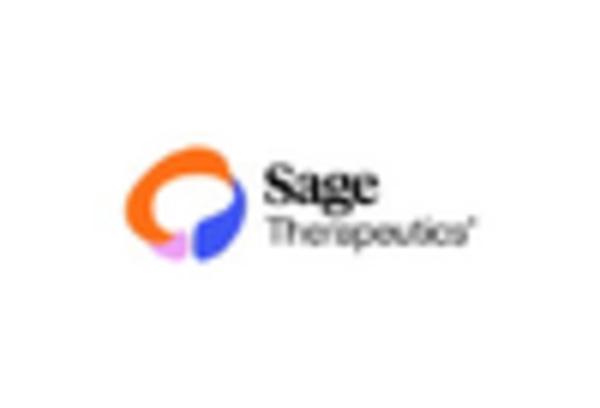Rising Infertility Rates
The fertility drug-surgery market is experiencing growth due to the increasing rates of infertility in the US. Factors such as delayed childbearing, lifestyle choices, and environmental influences contribute to this trend. According to the CDC, approximately 12% of women aged 15-44 face difficulties in conceiving, which drives demand for fertility treatments. This rising prevalence of infertility is prompting couples to seek medical assistance, thereby expanding the market. As more individuals become aware of their reproductive health, the fertility drug-surgery market is likely to see a surge in both drug and surgical interventions, reflecting a shift in societal norms regarding family planning.
Insurance Coverage Expansion
The expansion of insurance coverage for fertility treatments is a crucial driver for the fertility drug-surgery market. Many states in the US have enacted laws requiring insurance companies to provide coverage for infertility treatments, which has made these services more accessible. According to the National Conference of State Legislatures, as of 2025, 19 states mandate some level of fertility treatment coverage. This legislative support not only alleviates the financial burden on patients but also encourages more individuals to seek treatment. As insurance coverage continues to expand, the fertility drug-surgery market is likely to experience increased utilization of services, contributing to overall market growth.
Advancements in Reproductive Technologies
Innovations in reproductive technologies are significantly impacting the fertility drug-surgery market. Techniques such as in vitro fertilization (IVF), intracytoplasmic sperm injection (ICSI), and preimplantation genetic testing (PGT) are becoming more refined and accessible. The American Society for Reproductive Medicine reports that IVF success rates have improved, with live birth rates reaching around 50% for women under 35. These advancements not only enhance treatment efficacy but also attract more patients seeking solutions for infertility. As technology continues to evolve, the fertility drug-surgery market is poised for further expansion, driven by the increasing success rates and patient satisfaction.
Growing Acceptance of Fertility Treatments
Cultural shifts towards accepting fertility treatments are influencing the fertility drug-surgery market. As societal stigma surrounding infertility diminishes, more individuals are willing to explore medical options. Surveys indicate that nearly 60% of Americans now view fertility treatments positively, reflecting a significant change in perception. This growing acceptance encourages couples to seek assistance earlier, which may lead to increased market growth. Furthermore, the rise of support networks and online communities fosters an environment where individuals feel empowered to pursue fertility solutions, thereby driving demand for both drugs and surgical interventions in the market.
Increased Investment in Research and Development
Investment in research and development (R&D) within the fertility drug-surgery market is driving innovation and improving treatment options. Pharmaceutical companies and research institutions are allocating substantial resources to develop new drugs and refine surgical techniques. The National Institutes of Health (NIH) reports that funding for reproductive health research has seen a steady increase, with a focus on understanding infertility causes and enhancing treatment efficacy. This influx of investment not only fosters innovation but also leads to the introduction of novel therapies and procedures, thereby expanding the fertility drug-surgery market. As R&D continues to thrive, the market is expected to evolve, offering patients more effective solutions.

















Leave a Comment